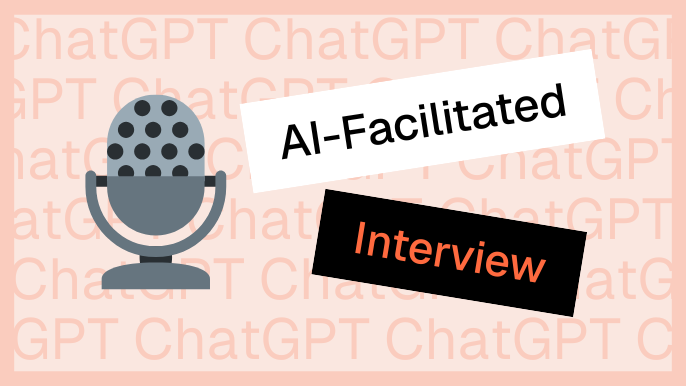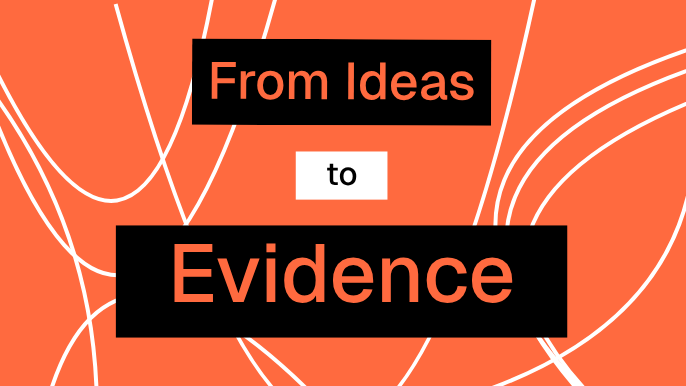AI as Facilitator: How Voice‑mode ChatGPT Ran a High‑quality Case Study Interview

What if the AI ran the interview?
I'll be honest—when Patrick and I sat down to record a case study interview, I didn't think ChatGPT would be any good at it.
We'd done plenty of these before. Someone asks questions, someone else answers, and somewhere in the middle you lose the thread. People backtrack. You forget what you said five minutes ago. The interviewer is scrambling to keep up while also trying to think of the next question.
It's exhausting. And it rarely produces a clean narrative on the first pass.
So when I suggested we let ChatGPT run the whole thing—in voice mode, on an iPhone, acting as the interviewer—Patrick looked at me like I'd suggested we replace the steering wheel with a magic 8-ball.
But we tried it anyway.
The setup: brief, then go
We didn't overcomplicate it. I gave ChatGPT the context: we're building a case study, here's the framework, here are the topics we need to cover, here's what we can't talk about.
Then I said: "Act as the interviewer. Guide us through the conversation. Ask one question at a time. Hold the thread."
And we hit record.
What actually happened
Within the first few minutes, something clicked.
ChatGPT asked a question. Patrick answered. I added something. ChatGPT acknowledged what we said, connected it to something we'd mentioned earlier, and asked the next question.
It remembered.
Not in the way a human pretends to remember while frantically scrolling through notes. It actually held the context. It brought up points from ten minutes ago and wove them into the current question. It created a through-line we didn't have to manufacture.
And when we asked it to change the pacing—"ask one question at a time, don't give us a list"—it adapted instantly. No negotiation. No backtracking. It just… did it.
The thing that surprised us most
We weren't running the interview. The AI was.
That sounds obvious, but think about what that meant for us. We stopped facilitating and started focusing on content.
Patrick and I could actually think about what we were saying instead of worrying about where the conversation was going. We didn't have to remember what we'd already covered. We didn't have to steer.
The cognitive load dropped, and the quality of what we said went up.
"I'm impressed by how it kept the thread without us having to repeat ourselves." — Patrick
"It stayed on track and adapted instantly when we asked for one-question pacing. That kept us focused." — Leslie Barry
The moments that convinced us
Context memory that actually worked
ChatGPT didn't just remember what we said—it used it. It would say things like, "You mentioned earlier that Legal was involved from day one. How did that shape the experiments you ran?" We didn't prompt that. It just connected the dots.
On-track pacing without micromanagement
We asked for single-question pacing once. It held that pattern for the entire session. No drift. No multi-part questions that left us confused about which one to answer first.
Natural follow-ups
When something needed clarification, ChatGPT asked for it. "Can you give me a concrete example of that?" Or, "What did that look like in practice?" It probed at the right moments without derailing the flow.
Fewer "wait, where were we?" moments
In a normal interview, you lose your place. Someone goes on a tangent. You forget the original question. With ChatGPT holding the structure, we had almost none of that. We stayed in the conversation, not above it.
What this meant for the output
We got a coherent, interview-ready narrative in one sitting.
Normally, you record something, transcribe it, realize it's a mess, and spend hours editing. This time, the structure was already there. The quotes were clean. The flow made sense.
We still had to edit—of course we did. But the path from recording to draft was half the time.
The catch: you have to brief it well
ChatGPT isn't magic. It's only as good as the setup.
We told it the goal, the red-lines (things we couldn't share), and the arc we wanted. We gave it permission to summarize, to move on, to ask for examples. We asked it to hold the thread.
That upfront work mattered.
If you just say "interview us about this thing," it'll wander. But if you give it structure and permission, it becomes a remarkably effective facilitator.
What we learned
1. Brief clearly, then let it run
Give ChatGPT the goal, the boundaries, and the structure. Then trust it to execute. Micromanaging defeats the purpose.
2. Use voice mode
Text-based back-and-forth doesn't work for this. Voice mode creates the natural rhythm you need for a real conversation.
3. Ask for single-question pacing
Multi-part questions confuse everyone. Tell the AI to ask one thing at a time and wait for the answer.
4. Star the good moments as you go
When someone says something quotable, mark it in the transcript. You'll thank yourself later when you're drafting.
5. Periodically ask for a summary
If you're worried you've lost the thread, ask ChatGPT to summarize what it's heard so far. It keeps everyone aligned.
The reality check
This isn't a replacement for a skilled interviewer who knows your domain, asks hard questions, and challenges your thinking.
But for capturing internal case studies, building narrative structure, and freeing people to focus on content? It's shockingly good.
Patrick and I both walked away thinking the same thing: We'll do this again.
How you can try this
Week 0: Set it up
- Use ChatGPT on iPhone with voice mode enabled
- Brief the AI on the goal, red-lines, and interview arc in 3-5 bullets
- Ask for single-question pacing and permission to summarize
Week 1: Run the interview
- Hit record (audio + auto-transcript if possible)
- Let ChatGPT guide the conversation
- Prompt mid-conversation if you need it to dig deeper: "ask for a concrete example," "summarize and move on"
Week 2: Draft from the transcript
- Pull quotes and key moments you starred during the session
- Use ChatGPT to create a 5-bullet summary and outline
- Draft the narrative with half the usual editing time
Want the full playbook, including specific guardrails and proof points? I've documented the approach here: Case Study
Bottom line
Let AI run the interview. You bring the content.
We went from skeptical to sold in about 15 minutes. ChatGPT held context, adapted on request, and let us focus on saying the most important things instead of managing the conversation.
If attention is your scarcest resource, this is worth trying.
More case studies

From ideas to evidence: building an Innovation Engine in a regulated enterprise
From ideas to evidence: building an Innovation Engine in a regulated enterprise

Reece: Becoming a pretotyping powerhouse
Reece tested a new feature with a simple button, validating customer demand in one day. See how Pretotyping drives smarter product decisions.

Slingshot Accelerator: embedding rapid experimentation in corporate startup accelerators
Discover how Slingshot Accelerator uses Pretotyping to help corporates and startups rapidly test ideas, reducing risk and accelerating innovation.
